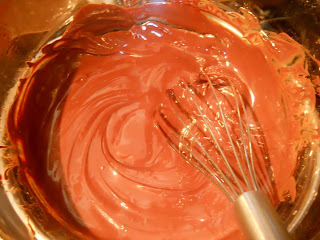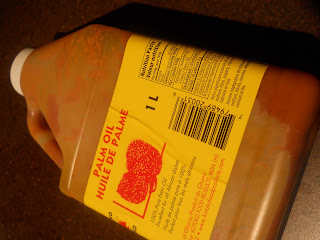It's springtime and that means that the fiddleheads are ready! Fiddleheads are actually the baby fronds of ferns, which are used as a vegetable. Apparently, they are high in omega fatty acids and fiber. In any case, don't be afraid to pick up a few handfuls, of this odd-shaped vegetable, the next time you're in the grocery store.
Simply wash the fiddleheads thoroughly to remove any 'gunk' (a technical culinary term for dirt and debris). I also like to cut off a little bit of the ends that have gone slightly brown.
Now, fiddleheads can be boiled, fried, steamed, sautéed or cooked in anyway. However, the best way to cook any vegetable is to put them in a lined baking sheet, cover them in olive oil and sea salt, and bake them. 375° F is a good temperature to cook these veggies.
Simply bake them until they are, well, done. (They're vegetables, not rocket science.) I like to cook them so that they are tender, but still retain a little crunch.
Once cooked, they have a flavour similar to green beans with a nutty kick. You can serve them on the side of any meal.
Have you ever found yourself with leftover cake and not know what to do with it? However unrealistic thought (of having leftover cake), there is something you can make with it; rum balls.
(As a warning, this recipe is one without measurements.) Begin with an amount of cake crumbs. I used the crumbs of a cake that I salvaged from an oven spill-over disaster. These particular cake crumbs are from my gluten-free lemon olive oil cake. (Click here for the recipe.) In case you're wondering, any type of cake will do.
You will also need some chocolate. I decided to use 70% dark chocolate, as it's what I had in my cupboard.
Slowly melt the chocolate over a double-boiler until it is silky smooth. (You can also use a microwave for this process.) When it is at this consistency, it is time to add some rum.
In fact, you don't need to use rum it all. I decided to put my own twist and use Nocello, a walnut flavoured liquor, instead.
When you add the alcohol to the chocolate, the mixture will get goopy, like this. At that point, you will need to add some fat to loosen it up.
Butter will do, but if you want to keep it dairy-free, I suggest using a little coconut oil or some unrefined palm oil. I like to use the unrefined palm oil, as it contains a high level of beta carotene. It has a beautiful orange-red colour and is a semi-solid at room temperature. You can find this type of palm oil quite easily in a store catering to the West Indian or African market.
Add enough fat so that the chocolate-liquor mixture goes back to a smooth finish.
Add the chocolate mixture to the cake crumbs.
Combine well and form into small balls.
You can roll the balls in ground nuts, chocolate sprinkles, coconut shavings, etc., or keep them au naturel as I did. Put the rum balls on a wax paper-lined tray and place them in a fridge or freezer until they set.
These rum balls are incredibly decadent. You will love them!
Polenta is great, peasant-style food that is made with simple ingredients. However, making it can be a chore, as it involves a lot of stirring, as well as a high risk for splatter burns. It is normally made by consistently stirring ingredients over a hot stove top.
What if I told you that there was a way to make the polenta without all the stirring? Well, read on, as this recipe is genius!
To begin, you will need 1 cup of medium-ground, yellow cornmeal.
In a pot, pour in 5 cups of cold water.
Here comes the secret ingredient...Baking soda! Baking soda, also known as sodium bicarbonate, is a very common ingredient found in most kitchens. It can be used for everything from baking cakes to cleaning. It also has a lesser-known property of breaking down foods.
For this recipe, you will only need a pinch. (It goes a long way!)
Add the cornmeal and the baking soda to the cold water. Salt can also be added at this time. (I used approximately half a teaspoon.)
Bring the liquid to a boil and then place a lid on top of the pot. You want to leave the lid slightly ajar to allow for some steam to escape. After coming to a boil, turn the heat down to a low setting (enough for the mixture to have a steady simmer). Leave the pot on the hot stove for 25 minutes. After the 25 minutes, remove the pot from the element and let the mixture stand for another 10 minutes.
Once you remove the lid, the polenta will look something like this.
Pour in approximately 1 to 2 tablespoons of extra virgin olive oil. Using olive oil at this point will provide better flavour and nutrition to the dish.
Give the mixture a quick whirl. Be sure to pick up any stiffer bits from the bottom and mix them in well.
Transfer the polenta to a serving dish and it will be ready to eat!
In this form, the polenta will be creamy. If you leave it out or in the fridge it will solidify and get a different texture for use.
Polenta is perfect for breakfast, lunch or dinner. My absolute favourite way to have it is with a dash of ground cinnamon and a drizzle of honey for a healthy and yummy morning meal.
























